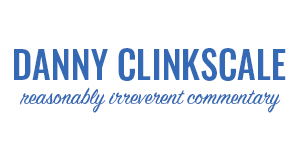Arts and Lifestyle Wednesday Presented by The Exit Room of Lee's Summit-Mostly Laurels For a Musical Journey
A very different, multi-layered, and mostly successful approach to a documentary comes to the table in the new film “Echo In the Canyon”. Operating on three levels, the film is ostensibly a documentary about the stunning quality of the Laurel Canyon music scene in California in the mid-sixties, featuring such transcendent bands as The Byrds, The Beach Boys, The Mamas and the Papas, Buffalo Springfield, and more.
This focus is handled in the usual documentary style with archival footage and interviews, with the main emphasis on stories (and great ones) from Tom Petty, David Crosby, Eric Clapton, Graham Nash, Jackson Browne, Steven Stills, Brian Wilson, Michelle Phillips, Roger McGuinn, Ringo Starr, and Lou Adler. All have fun tales to tell, Petty (in the last interview before his death), Crosby, and Stills particularly featured, but there is great stuff from everyone.
However, this movie is billed as “Starring Jakob Dylan”, and it sure is. Dylan does all of the interviewing, and is on camera for most of it, most often in two-shots with the subject. But the other layers on the documentary are the 2015 album and concert of the same name, with Dylan leading a band that covers many of the songs of the era. Quite a few are more obscure works by the original artists, which is rather a good idea. Several songs from the live concert, with Dylan, along with Regina Spektor, Cat Power, Beck, Fiona Apple, and Jade Castrinos, performing in a concert at the Orpheum Theatre in Los Angeles in October 2015, are incorporated, along with recording sessions, into the film throughout.
The musical stories, archival performances (there could have been a few more of these), and the setting of the bohemian scene just outside Los Angeles are undeniably appealing. But the level of enjoyment of the film undoubtedly lies in your appeal to Dylan himself. He very much is the star of the piece, and on the whole, I found him engaging, wryly funny, and a winning performer and bandleader. Slightly less effective are the scenes where Dylan and a few of his collaborators sit around in what I assume is his apartment and chat about the Laurel Canyon scene amidst record albums scattered on a coffee table.
Because the film works at different levels, it doesn’t strive to be comprehensive. For instance, Joni Mitchell is never mentioned and Judy Collins barely, and they were an integral part of the scene. Some of the performers who came in the “second wave” of acts who came to the area, like The Doors, are not included. Bob Dylan is scarcely mentioned, although when he is, it is one of the low-key funny moments that Jakob provides. When Crosby mentions that “Dylan was inspired by the Byrds use of the electric 12-string”, Jakob says “We need a clarification here”. Crosby wryly responds “Bob”.
“Echo” is directed by former Capitol Records executive Andrew Slater, with his connections and Jakob’s likely responsible for the heavyweight lineup of interviewees. Quite a few vintage, and current, helicopter shots of the Valley are used effectively. The film is generally shot in a gauzy form, kind of reflecting the trippy nature of the times. That is with the exception of the Orpheum concert, which looks quite good, although since the performances are generally mixed with the scenes of the recording sessions, it somewhat takes away the live feel.
The concerts best moments come with songs that featured female voices as well. Dylan’s duets with Apple, Power, and Spekter are quite well done. The Mommas and the Papas songs fare extremely well, especially “Monday, Monday” and “Go Where You Wanna Go”. In his usual quirky way, Beck also is a great addition to the mix.
The film, as described by Slater in a backstage scene at the concert, was inspired by Slater and Dylan having watched a late sixties movie called “Model Shop” by French filmmaker Jaque Demy and set in Laurel Canyon. Clips from the film are used intermittently throughout, without great effect. We don’t know what it is about, or if there is any real significance to the story. It only provides a visual link to the era, and seemed superfluous to me.
But it is the music and the stories that really carry the mail. The Ed Sullivan show appearances, and other TV appearances of the era, by the various bands are highlighted, and often morph into the modern versions of the songs. One television appearance that was compromised was singled out by Steven Stills in one of many revealing and humorous tales. Buffalo Springfield were booked to be the first rock band ever to be appear on “The Tonight Show”. Stills, clearly still annoyed, explains that Neil Young quit the band the day before they were set to fly to New York for the appearance. Young is not interviewed for the movie, appearing only over the closing credits thrashing away at his guitar by himself in a recording studio.
I would be merely playing the role of spoiler if I revealed any more of the intriguing and funny stories told by the interviewees. Ringo is always funny, Crosby is blunt and engaging, and McGuinn, whose life path changed dramatically from those hedonistic times, still smiles his way through several decadent remembrances.
The biggest treat, and certainly the most wistful one, are the many appearances by Petty throughout the picture. He would be part of the “third wave” of the Canyon scene, but was drawn to it by the first group, and his usual casual, gravelly, yarns bring quite a few smiles.
Imperfect, but extremely enjoyable, “Echo in the Canyon” paints a picture, and gives an ear to a certainly not forgotten, but always worth revisiting era of rock music. Just be ready for plenty of Jakob Dylan.
Clink Scale 7.4

